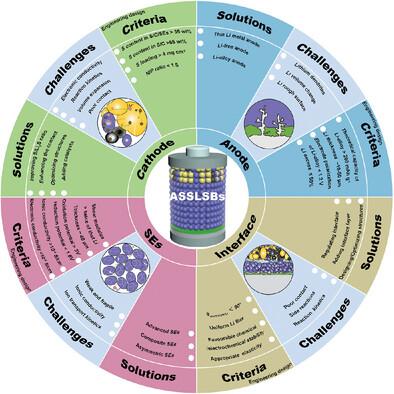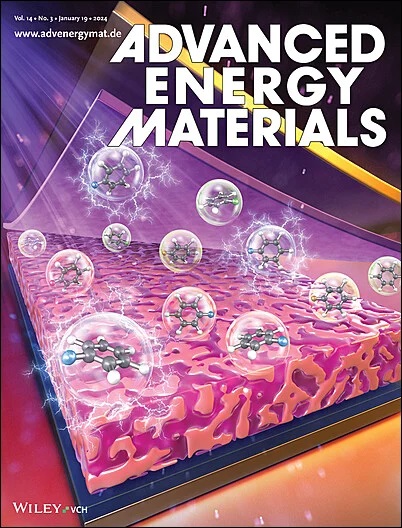Insight into All-Solid-State Li–S Batteries: Challenges, Advances, and Engineering Design
IF 24.4
1区 材料科学
Q1 CHEMISTRY, PHYSICAL
引用次数: 0
Abstract
The advancement of conventional lithium–sulfur batteries (LSBs) is hindered by the shuttle effect and corresponding safety issues. All-solid-state lithium–sulfur batteries (ASSLSBs) substitute the liquid electrolytes with solid-state electrolytes (SEs) to completely isolate the cathode and anode, thereby effectively suppressing polysulfide migration and growth while significantly enhancing energy density and safety. However, the development of ASSLSBs is accompanied by several challenges such as the formation of Li dendrites, electrode degradation, poor interfacial wettability, and sluggish reaction kinetics, etc. This review systematically summarizes the recent advancements made in ASSLSBs. First, a comprehensive overview of the research conducted on advanced cathodes utilizing sulfur (S) and lithium sulfide (Li2S) is displayed. Subsequently, the SEs are classified and discussed that have been implemented in ASSLSBs. Furthermore, the issues of interfaces and anodes in ASSLSBs are analyzed. Finally, based on current laboratory advancements, rational design guidelines are proposed for each component of ASSLSBs while also presenting four practical recommendations for facilitating early commercialization.

洞察全固态锂电池:挑战、进展和工程设计
传统锂硫电池(LSB)的发展受到穿梭效应和相应安全问题的阻碍。全固态锂硫电池(ASSLSBs)用固态电解质(SE)取代液态电解质,将正负极完全隔离,从而有效抑制了多硫化物的迁移和生长,同时显著提高了能量密度和安全性。然而,ASSLSBs 的开发也伴随着一些挑战,例如锂枝晶的形成、电极降解、界面润湿性差、反应动力学迟缓等。本综述系统地总结了 ASSLSBs 的最新进展。首先,全面概述了利用硫(S)和硫化锂(Li2S)进行的先进阴极研究。随后,对已应用于 ASSLSB 的 SE 进行了分类和讨论。此外,还分析了 ASSLSB 中的界面和阳极问题。最后,根据目前的实验室研究进展,为 ASSLSBs 的每个组件提出了合理的设计指南,同时还提出了四项实用建议,以促进其早日商业化。
本文章由计算机程序翻译,如有差异,请以英文原文为准。
求助全文
约1分钟内获得全文
求助全文
来源期刊

Advanced Energy Materials
CHEMISTRY, PHYSICAL-ENERGY & FUELS
CiteScore
41.90
自引率
4.00%
发文量
889
审稿时长
1.4 months
期刊介绍:
Established in 2011, Advanced Energy Materials is an international, interdisciplinary, English-language journal that focuses on materials used in energy harvesting, conversion, and storage. It is regarded as a top-quality journal alongside Advanced Materials, Advanced Functional Materials, and Small.
With a 2022 Impact Factor of 27.8, Advanced Energy Materials is considered a prime source for the best energy-related research. The journal covers a wide range of topics in energy-related research, including organic and inorganic photovoltaics, batteries and supercapacitors, fuel cells, hydrogen generation and storage, thermoelectrics, water splitting and photocatalysis, solar fuels and thermosolar power, magnetocalorics, and piezoelectronics.
The readership of Advanced Energy Materials includes materials scientists, chemists, physicists, and engineers in both academia and industry. The journal is indexed in various databases and collections, such as Advanced Technologies & Aerospace Database, FIZ Karlsruhe, INSPEC (IET), Science Citation Index Expanded, Technology Collection, and Web of Science, among others.
文献相关原料
| 公司名称 | 产品信息 | 采购帮参考价格 |
|---|
 求助内容:
求助内容: 应助结果提醒方式:
应助结果提醒方式:


